Osteochondrosis is a chronic disease of the spine. It develops with age and consists of degenerative-dystrophic changes that occur in the intervertebral discs. For a long time, there were no symptoms. A person may only notice some stiffness in the spine.
Osteochondrosis progresses slowly - many factors affect the rate of disease. If the pathology is not treated, complications arise - sciatica, sciatica and others, depending on the spine. Some doctors believe that a disease like osteochondrosis does not exist, and only those who do not understand human physiology make this diagnosis.
Causes
In the 21st century, the disease, compared to the 20th century, has visibly rejuvenated. You can often find young people with degenerative-dystrophic changes in the intervertebral discs during a medical examination for another pathology. There is only one reason for this - urbanization and progress.
Today, a person does not have to struggle to go to work or get food. Most lead a sedentary lifestyle, eat malnourished and gain weight quickly, walk outdoors and active activities prefer a computer and a comfortable sofa. Even before work, many get into their own cars, which are in the underground garage on the territory of a multi-story building, and stay at the workplace for 7-9 hours or more.
On a note. Osteochondrosis is a human-only disease. None of the mammals had such a pathology. You need to understand that this is Homo sapiens' retribution for walking upright.
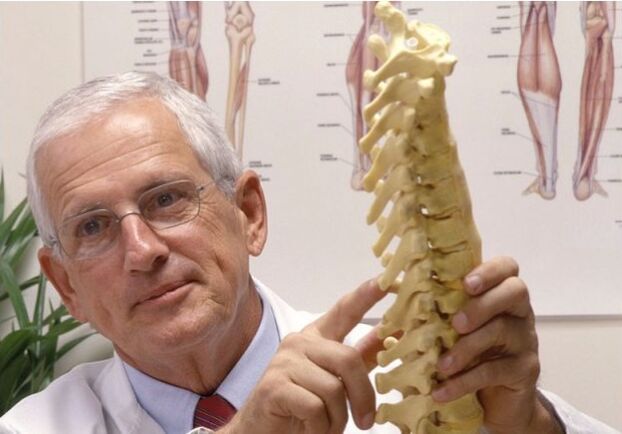
What causes osteochondrosis?
The following factors can lead to the onset of the disease against the background of physical inactivity, lack of sufficient physical activity and an unhealthy lifestyle:
- violation of mineral and vitamin metabolism;
- a large number of transferred infectious diseases;
- chronic stress, depression;
- sudden movements, weight lifting;
- spinal injury;
- severe hypothermia;
- sloppiness;
- unnoticed and unhealed curvature of the spine;
- long stay in an uncomfortable position (not necessarily sitting).
On a note. Big sports have a negative impact on human health. For example, weight lifting (and not only) in the future could become a trigger for degenerative-dystrophic changes in the intervertebral discs.

What happens to the column?
The following factors directly affect back health:
- blood circulation in the paravertebral tissues is disturbed, the intervertebral discs suffer from a lack of nutrients (they do not have their own blood vessels and depend on the tissues that surround them);
- the muscular corset that supports the spine weakens, the vertebrae receive an additional load that they cannot bear;
- intervertebral discs lose moisture, decrease in volume and diameter - the spine seems to sag (many people notice that they get 5 or even 10 centimeters shorter with age);
- there is instability of one or more parts of the spine;
- the body solves the problem of instability by creating osteophytes - these are marginal bony growths that, over time, firmly cement the spine, depriving it of flexibility.
On a note. The transformation of the spine itself does not cause pain - the pain syndrome appears when the nerve roots, large arteries and lymphatic vessels are infringed by osteophytes or the anatomical position of the vertebral bodies has changed.
Symptoms
Signs of osteochondrosis increase with disease progression. There are 4 stages of pathology:
- First. Symptoms are completely absent. Painless. A person may experience a little more fatigue than usual, some stiffness in the spine, which he explains to himself as fatigue, excessive physical exertion and overwork. Osteochondrosis in the first stage can be
- Second. A persistent pain syndrome appears due to the violation of the nerve roots, which is easily stopped by non-steroidal anti-inflammatory drugs. If the patient continues to ignore his body's signals and does not go to the doctor, the disease progresses quickly. Spine flexibility is reduced, especially in the cervical and lumbar regions. The occurrence of vertebral artery syndrome is likely due to its compression by edematous paravertebral tissues or a displaced vertebra.
- Third. Pathology in a state of abandonment. Pain haunts a person all the time, weakening slightly in a horizontal position, but it is impossible to stay long in one position (on the back, on the side). Sleep is disturbed, the patient becomes irritable. A person bends over (thoracic, lumbar), trying to get a more comfortable position that does not cause discomfort, which becomes an impetus for the formation of a hump, scoliosis and other spinal deformities.
- Bedroom. There is an addition of osteophytes - stabilization of the spine. The patient can look around just by fully rotating the trunk. The pain is strong, constant, completely removed only by blocks (novocaine, prednisolone). Disability in the fourth stage is about 80%.
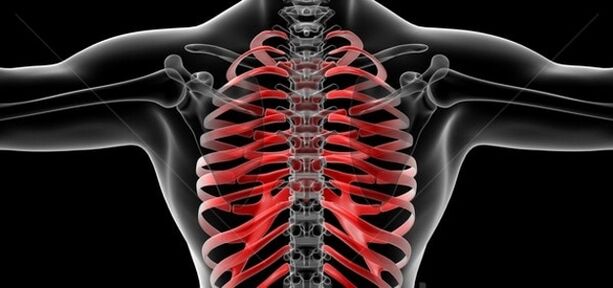
Simultaneously with the listed signs, the patient may be plagued by symptoms that, at first glance, have nothing to do with the back - dizziness, flies in the eyes, high blood pressure, numbness of the upper extremities (cervical osteochondrosis), chest pain that mimics a angina or heart attack, intercostal neuralgia (thoracic osteochondrosis), cauda equina syndrome, numbness of the lower extremities (lumbosacral osteochondrosis).
On a note. The pathology causes vegetovascular and neurodystrophic disorders.
Diagnosis
To establish an accurate diagnosis, the patient is referred for radiography, myelography, and neurological examination of reflexes. If this is not enough, a reference is issued to:
- MRI (magnetic resonance imaging);
- CT (computed tomography);
- NMR (nuclear magnetic resonance).
The doctor also interviews the patient and performs a medical examination, which reveals areas of pain, possible curvature of the spine, difference in leg length, and other objective signs of spinal damage.
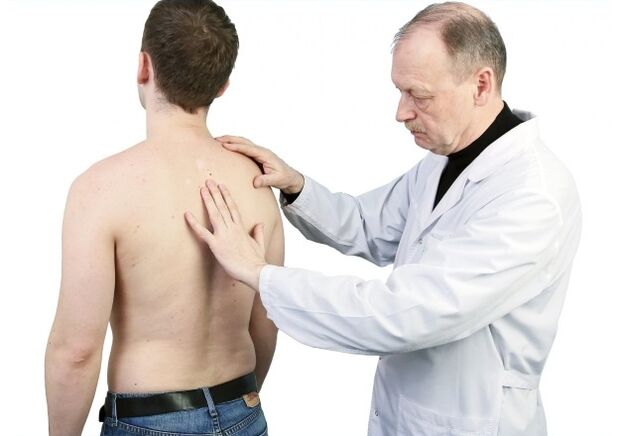
Therapy
The treatment of osteochondrosis is complex. To stop the degeneration process, or at least slow it down, are assigned:
- chondroprotectors - externally, orally (orally), in injections to restore cartilage tissue;
- muscle relaxants - relax spasmodic muscle groups, are used only under medical supervision;
- analgesics;
- blockages - relieve pain for a long time, but do not heal;
- physiotherapy (magnetotherapy, phonophoresis, vibrotherapy, EHF and others);
- exercise therapy and author gymnastics;
- massage;
- acupuncture;
- bath and mud therapy.
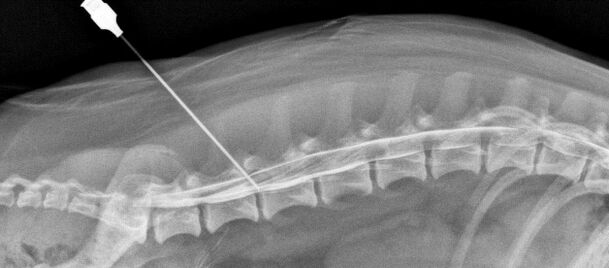
In advanced cases (uncontrolled urination and defecation, cauda equina syndrome), surgical intervention may be necessary to decompress and stabilize the affected spinal segments.
Decompression operations with later access:
- facetectomy;
- foraminotomy;
- laminectomy;
- laminotomy.
Decompression operations with previous access:
- discectomy;
- corpectomy.
To stabilize the damaged segment, spinal fusion is used - the fusion of adjacent vertebrae using a special fixed structure (stems). A bone implant is placed in place of the removed intervertebral disc (bone material is taken from a donor or formed from the patient's own bone).
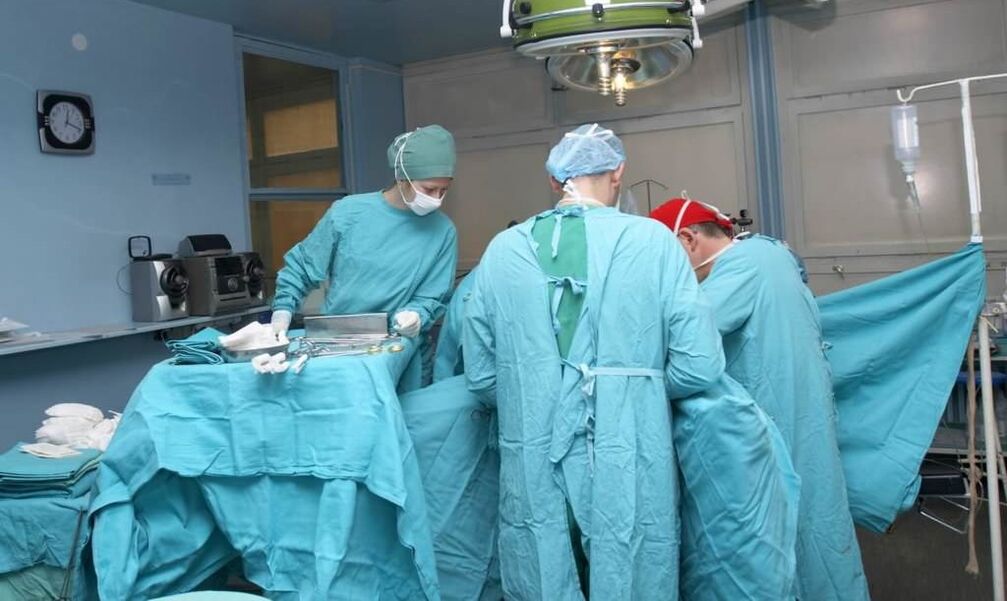
On a note. Spinal fusion can be avoided. Surgeons have achieved a lot in the surgical treatment of osteochondrosis. Instead of a removed intervertebral disc, it is possible to install an artificial one and thus avoid complete immobilization of the segment. Spine operations are fraught with many complications, so they are prescribed only in extreme cases.
Prevention
Even Hippocrates said, "It is easier to prevent a disease than to cure it. "This rule also applies to osteochondrosis. It is enough for a person to monitor their health, lead an active lifestyle, eat right, exercise regularly to maintain spinal health.
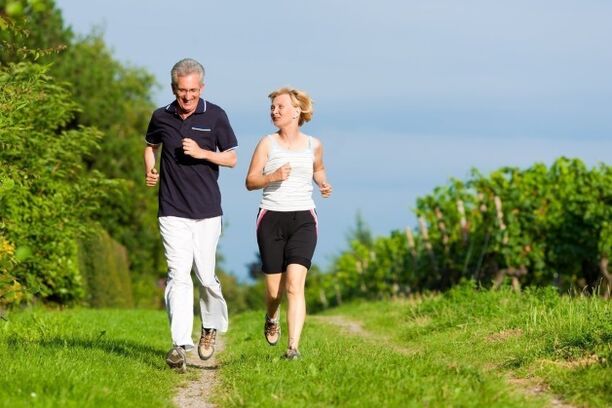
If the disease, however, manifests itself, prevention will help not to start it. Follow these guidelines:
- Sleep on the right mattress and pillow. Choose orthopedic and see your doctor first.
- Make it a rule of thumb to walk at least half an hour before and after work. During the break, don't sit at the computer or phone, but warm up and then have a snack.
- Watch your weight. The higher it is, the harder it is on the spine.
- Note the rest mode (work during the day, sleep at night).
- Try to eliminate stress from your life. If you feel like you are slipping into depression, see a specialist.
On a note. Traditional healers claim that osteochondrosis can be cured with the help of medicinal herbs. It is difficult to say to what extent this statement is true. Treatment with alternative methods can be used in conjunction with that prescribed by the doctor. Otherwise, the result is not guaranteed.
Osteochondrosis is a dangerous disease, fraught with disabilities if treatment is not started on time. If you feel tired quickly and in the morning your spine is less flexible than before, see a doctor and get a full exam. In the early stages, the pathology can be delayed and even completely stopped.

























